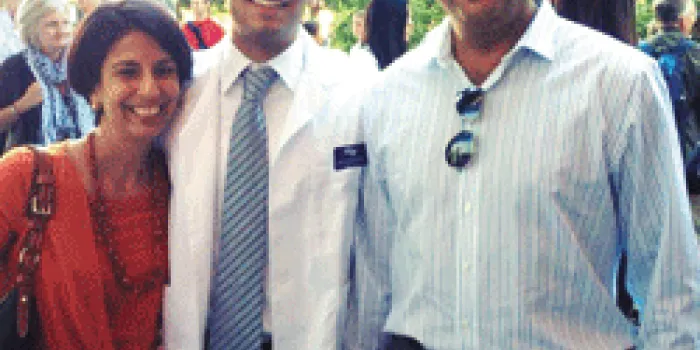Perseus Patel and Michael Goldberg, both 23, have several things in common. They recently began their second year of medical school and both have hemophilia. Further, their involvement in the bleeding disorders community inspired them to pursue medical careers and that experience will influence how they practice medicine.
Patel, who attends the University of California, San Francisco, spent the first 10 years of his life in India. There, treatment for hemophilia was radically different than the care available in the US. For example, prophylaxis was nonexistent in India, where only the most severe or life-threatening bleeds were treated.
Nurturing the whole person
“My passion for medicine really started in India, where I was born,” says Patel, who has severe hemophilia A. “I saw the type of system they had there. After moving here, I saw the kind of dramatic difference that multidisciplinary and holistic care can have, not only on my physical being, but on me as a person.”
Children’s Hospital Oakland, Patel’s hemophilia treatment center (HTC), provided daily physical therapy. A social worker educated his school teachers on his medical needs and helped his parents navigate the many demands of his bleeding disorder.
Camp Hemotion, the bleeding disorders camp of the Hemophilia Foundation of Northern California, is a place Patel thrived. He’s gone every year since he was 10, first as a camper, then as a counselor. His camp experience inspired Patel to organize camps for kids with bleeding disorders in India. Since 2008, he’s held camps in Pune, Chennai and Mumbai, his hometown.
“There’s value in treatments that go beyond the biomedical, beyond just factor therapy and other drugs, like support groups and camps,” says Patel. “There’s the inherent value in nurturing the entire person.”
Goldberg, a student at Indiana University School of Medicine in his hometown of Indianapolis, has mild hemophilia A. Over the years, he has volunteered at his local chapter, Hemophilia of Indiana (HOI), doing everything from stuffing envelopes and answering phones to leading the teen group at his state’s annual meeting. Recently, he’s had paid summer internships with the Indiana Hemophilia & Thrombosis Center (IHTC), assisting researchers there with statistical analysis and database work. Goldberg has also volunteered at Camp Brave Eagle, run by IHTC and HOI. There, he had an opportunity to develop his bedside manner as a counselor to the kids in his cabin. “When I would take them to get infused, we’d talk about what was going on and if they were nervous, how to get past that,” recalls Goldberg.
Future plans
Patel, whose undergrad degree is in psychobiology from the University of California, Los Angeles, plans to be a pediatrician. “What attracts me is the opportunity to work with families, with parents and caregivers,” he says. “That’s very deeply rooted in my own personal experiences with hemophilia.”
Goldberg has not yet picked a specialty. “I’ve got a couple that I’m interested in, and hematology is definitely on that list,” he says. He researched hematology throughout his undergraduate years at Indiana University in Bloomington, where he majored in neuroscience. “I’ve been so involved with hematology throughout my life,” says Goldberg.
Whichever direction they choose, both say that their experiences with hemophilia and the bleeding disorder communities that each became a part of helped guide them to the study of medicine. “Being able to take a step back and see what a difference all that made in my life was a big part of what inspired me to become a physician,” says Patel.
“Over the years, I’ve been able to go back and forth between the medical provider world and the patient world,” he continues. “That’s given me a very good perspective on what patients want, not just what they need.”

